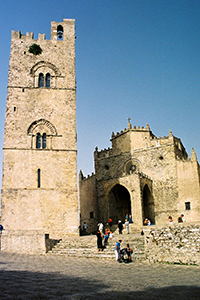Speaker
Description
Auger electron emitters are promising candidates for targeted radionuclide therapy. They decay by internal conversion or electron capture, resulting in Auger cascades with the emission of several low energy (eV-keV) electrons. The multiplicity of electrons combined with their short range (nm-μm) results in a high local energy deposition density near the decay site. Decays happening close to the DNA therefore have high radiotoxicity while decays happening outside the cell have low radiotoxicity. Several Auger electrons emitters (e.g. I-125, In-111, Tc-99m) have been intensely studied in order to understand the underlying radiobiology and quantify their radiotoxicity in the form of RBE-values. However, the already complex dosimetry is further complicated by the non- trivial intracellular organometallic chemistry of these radionuclides. The resulting absorbed dose calculations are therefore subject to high uncertainties.
We have developed the use of a “new” radionuclide, Cs-131, for investigating the radiotoxicity of Auger electrons. Cs-131 itself is not suitable for radionuclide therapy, but has several characteristics that makes it an ideal “model” isotope. Cs-131 can be formed from reactor produced Ba-131, using a “solution generator” principle. Cs-131 decays by electron capture (100 %) with a half-life of 9.69 days. It emits on average 10 electrons per decay, with an average energy of 613 eV1. Most importantly, its alkali chemistry result in a homogenous intracellular distribution. This allowed us to make simple but robust absorbed dose calculations, without the inherent uncertainties. Using this setup, we investigated the radiotoxicity of intracellular Cs-131 decays. Preliminary results show an RBE-value of approximately 4.2
Reference:
1. Personal communication with Lee QB. Based on Monte Carlo calculations as described in ref: Lee BQ, Nikjoo H, Ekman J, Jönsson P, Stuchbery AE, Kibédi T. A stochastic cascade model for Auger-electron emitting radionuclides. Int J Radiat Biol 2016;3002:1–13.
2. Fredericia PM. 2017. Quantification of Radiation -Induced DNA Damage Following Intracellular Auger-Cascades [dissertation ]. Technical University of Denmark, DK




